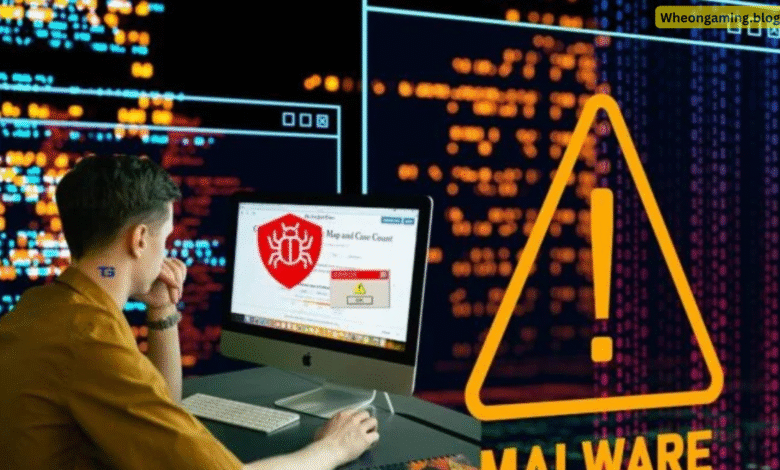Decoding huzoxhu4.f6q5-3d: Unveiling the Mystery Behind a Complex Digital Phenomenon”

Introduction: The Enigma of huzoxhu4.f6q5-3d
In the fast-evolving world of technology, digital codes and identifiers like huzoxhu4.f6q5-3d often emerge, stirring curiosity and sometimes confusion. What does this cryptic string mean? How does it fit into the broader digital landscape? Is it a random sequence, or does it carry deeper significance?
Today, we’re diving deep into this fascinating code — huzoxhu4.f6q5-3d — exploring its potential meanings, applications, and why such identifiers matter in modern tech. Whether you’re a developer, a tech enthusiast, or simply intrigued by digital trends, this article unpacks the topic in a way that’s both accessible and insightful.
1. Understanding the Anatomy of huzoxhu4.f6q5-3d
At first glance, huzoxhu4.f6q5-3d looks like a random jumble of letters, numbers, and symbols. But every string like this often has a structure and purpose.
Breaking it down:
- huzoxhu4: The first segment could be an alphanumeric identifier. It might represent a user ID, a hash fragment, or a coded tag.
- . .f6q5: The dot often separates different parts of code. This segment might be a sub-identifier, version number, or classification marker.
- -3d: The suffix “3d” commonly relates to “three-dimensional” in tech contexts, hinting at graphics or spatial data. Alternatively, it could be an index or flag.
Codes structured like this are often used in databases, software development, or encryption schemes to uniquely identify entities or configurations. The mix of letters, numbers, dots, and dashes enhances uniqueness and can convey hierarchical information.
2. The Role of Complex Codes in Modern Technology

Complex codes such as huzoxhu4.f6q5-3d serve a crucial role across industries. In software, unique identifiers ensure that every element — be it a user, device, or data packet — is distinct and traceable.
For example:
- In cybersecurity, cryptic codes act as keys or tokens to verify identity and grant access.
- In gaming and 3D modeling, codes like these might tag assets, textures, or animation sequences for quick retrieval.
- In blockchain and cryptocurrency, hashes and identifiers underpin transactions, ensuring security and transparency.
These alphanumeric strings, while inscrutable at first, are the backbone of efficient digital organization and communication.
3. Potential Applications of huzoxhu4.f6q5-3d in Industry
Given its structure, huzoxhu4.f6q5-3d could fit several real-world applications:
- 3D Graphics and Animation: The “3d” suffix suggests a link to three-dimensional content. It might be an asset tag for models, textures, or scenes in a graphics pipeline.
- Software Versioning: The dot notation often separates versions or modules. This code might represent a specific build or patch of a software product.
- Data Management: It could be a unique key in a database that classifies records, users, or configurations for easy lookup and integrity checks.
The versatility of such codes means they are vital in workflows that require precision and scalability.
4. How Such Codes Are Generated and Maintained
Generating unique, structured codes like huzoxhu4.f6q5-3d isn’t random — it requires thoughtful design and robust algorithms.
- Algorithmic Generation: Often, systems use hashing functions, random generators combined with date/time stamps, or custom algorithms that ensure no two codes clash.
- Maintaining Integrity: To avoid duplication and errors, databases enforce rules and indexes. Continuous validation ensures that codes remain unique as data grows.
- Human Readability vs. Machine Efficiency: Some codes balance being machine-friendly while still allowing developers to glean meaning at a glance.
Understanding these mechanisms offers insight into how large-scale digital systems operate seamlessly behind the scenes.
5. The Security Implications of Codes Like huzoxhu4.f6q5-3d
Security is a cornerstone in tech today, and complex codes play a direct role.
- Authentication and Authorization: Such codes might function as tokens verifying identities or permissions in apps and networks.
- Encryption Keys: They can be part of cryptographic systems, protecting sensitive information from unauthorized access.
- Audit Trails: Unique identifiers help track activities, changes, and transactions — essential for compliance and forensic analysis.
The design of these codes must balance complexity with usability to ensure systems are both secure and user-friendly.
6. Comparing huzoxhu4.f6q5-3d with Other Common Identifier Formats
The format of huzoxhu4.f6q5-3d can be compared to:
- UUIDs (Universally Unique Identifiers): Typically long hexadecimal sequences separated by dashes, used to uniquely identify information without central coordination.
- Semantic Versioning: Uses dots to separate major, minor, and patch versions (e.g., 1.2.3).
- Hashes: Cryptographic strings like SHA-256 output, which look random but correspond directly to input data.
Each format has strengths suited to different tasks, and codes like huzoxhu4.f6q5-3d could be custom hybrids combining multiple principles.
7. Challenges in Managing Complex Identifier Systems
Managing codes like huzoxhu4.f6q5-3d isn’t without hurdles:
- Collision Risks: Despite careful design, the chance of duplication can exist, especially at scale.
- User Accessibility: Such codes are hard to remember or communicate verbally, complicating troubleshooting or manual interventions.
- Integration Issues: Different systems may have incompatible ID formats, making cross-platform interoperability tricky.
Organizations tackle these by standardizing formats, automating validation, and improving user interfaces around code handling.
8. The Future of Digital Identifiers: Trends to Watch
The world of identifiers is evolving rapidly:
- Decentralized Identifiers (DIDs): Emerging standards allow users to control their digital identity across platforms securely.
- AI-Generated Codes: Machine learning algorithms optimize code generation for uniqueness, security, and efficiency.
- Human-Friendly IDs: Efforts to make identifiers easier to read, pronounce, and remember without sacrificing uniqueness.
Staying abreast of these trends helps tech professionals anticipate and adapt to future challenges and opportunities.
9. Real-Life Example: A Hypothetical Use Case of huzoxhu4.f6q5-3d
Imagine a cutting-edge virtual reality platform. Each 3D asset in the platform’s library is tagged with a unique code similar to huzoxhu4.f6q5-3d. This code helps:
- Developers quickly locate and update assets.
- Users share specific virtual items without confusion.
- The system tracks usage patterns for optimization.
Such a coding system ensures smooth operation and scalability in a complex environment.
10. Best Practices for Creating and Using Codes Like huzoxhu4.f6q5-3d
For anyone designing or using similar identifiers, consider these tips:
- Plan the structure carefully to encode relevant information while maintaining uniqueness.
- Automate generation and validation to reduce human error.
- Document formats clearly so all stakeholders understand the meaning and usage.
- Ensure compatibility with existing systems to avoid integration headaches.
- Regularly audit the identifier database to catch anomalies early.
Following best practices improves reliability, usability, and security.
Frequently Asked Questions (FAQ)
Q1: What exactly does huzoxhu4.f6q5-3d stands for?
A1: It’s a structured alphanumeric code likely representing a unique identifier in a system. The exact meaning depends on context but may encode version, asset, or user information.
Q2: Can such codes be guessed or replicated easily?
A2: Properly generated codes use randomness and hashing to minimize guessability and duplication risks.
Q3: How do developers generate this code?
A3: They use algorithms, including random number generators, hash functions, or a combination of timestamps and unique salts.
Q4: Why are dots and dashes used in codes?
A4: They separate different segments, making codes more readable and allowing hierarchical encoding.
Q5: Are these codes human-friendly?
A5: Not always. They’re optimized for machines but can be made more readable with proper design and documentation.
Conclusion: Embracing the Complexity of Digital Codes
In an increasingly digital world, codes like huzoxhu4.f6q5-3d are essential threads weaving the fabric of modern technology. While they may appear mysterious or cryptic, they embody carefully crafted systems designed to organize, secure, and optimize digital experiences.
By understanding their structure, role, and management, we gain insight into the silent engines powering our devices and applications. Whether you’re developing software, managing data, or simply fascinated by tech, appreciating these identifiers opens new perspectives on digital innovation.



